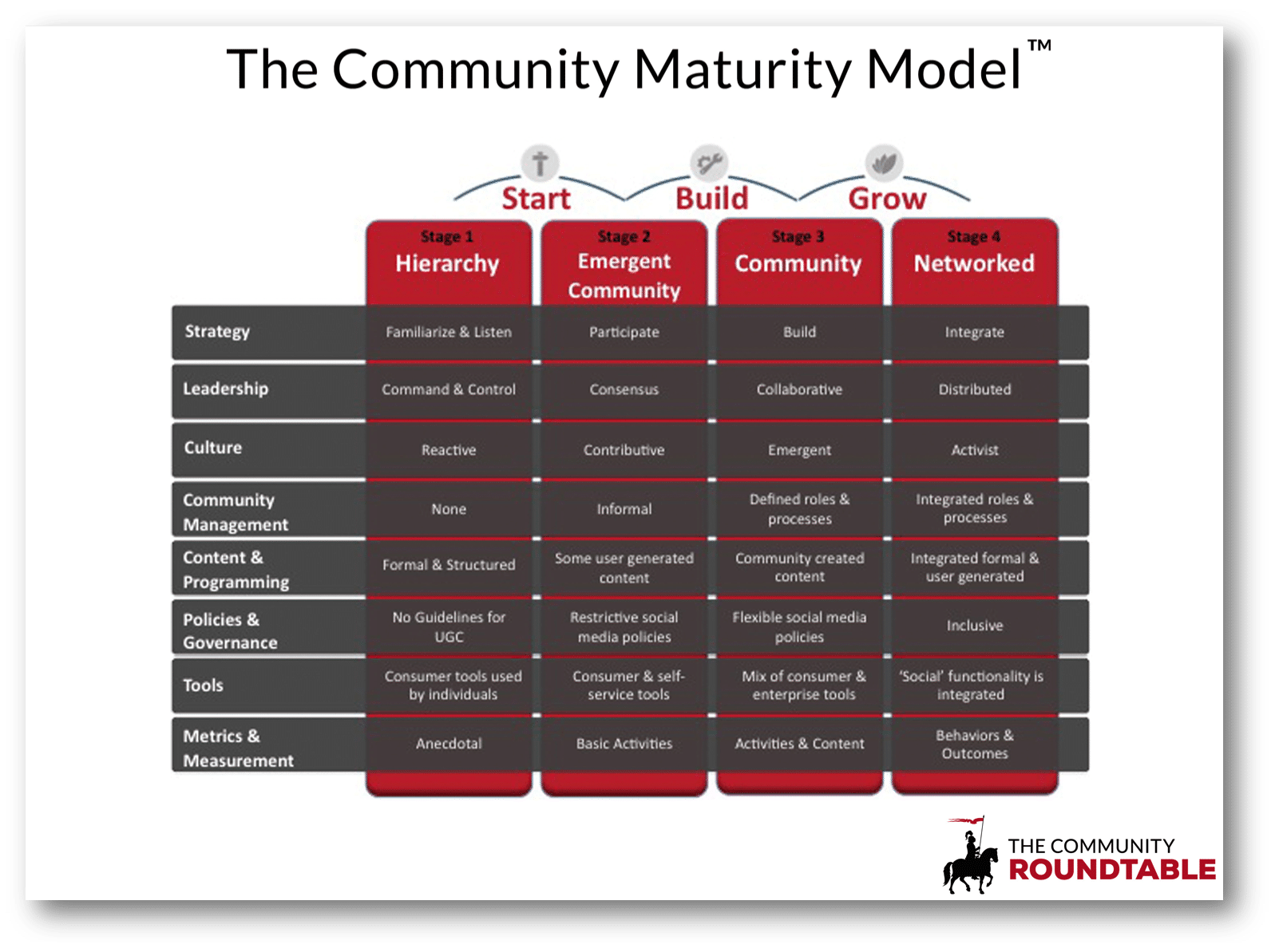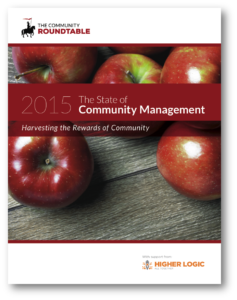 The Community Maturity Model helps community professionals assess the maturity of a community in the eight competencies and helps illustrate indicators of progress. Understanding these known patterns in community maturity will not only help you advance your program based on proven research but also help ensure you aren’t reinventing the community wheel needlessly.
The Community Maturity Model helps community professionals assess the maturity of a community in the eight competencies and helps illustrate indicators of progress. Understanding these known patterns in community maturity will not only help you advance your program based on proven research but also help ensure you aren’t reinventing the community wheel needlessly.
A look at patterns in community through the CMM:

STAGE 1: HIERARCHY
In Stage 1, organizations generally use social technology or community structures in an ad hoc manner. A community strategy is not yet completed, and resources have not been allocated to community management. Participation guidelines and content management processes (if any) are informal.
INITIATIVES/INPUTS FOR STAGE 1 COMMUNITIES:
- Finding an internal “owner”
- Recruiting one or more executive sponsors
- Building alignment on strategy and approach
- Identifying cross-functional champions
- Educating control functions – legal, IT, risk, compliance, HR – on social technologies and dynamics
- Starting a listening program

STAGE 2: EMERGENT COMMUNITY
In Stage 2, organizations focus on creating structures to support their community strategy. They’re dedicating resources to formalizing policies and processes. Communities in this stage have a strategy and staff in place and are creating structures for advocates, community content and programming, and reporting. Expectations for behavior and value are clear.
INITIATIVES/INPUTS FOR STAGE 2 COMMUNITIES:
- Revising the operational framework and roadmap
- Developing a comprehensive budget
- Formalizing an enterprise-wide governance structure
- Deploying social software
- Developing community management expertise and tools
- Creating metrics scorecards for various reporting levels
- Documenting response and escalation processes
- Defining and executing on community staff training needs

STAGE 3: COMMUNITY
In Stage 3, the community program is well-established and generating value. Communities in this stage have dedicated resources to carry out the community strategy and can match metrics to progress. Advocates and other members actively collaborate, and community staff focus on integrating the community into core organizational functions.
INITIATIVES/INPUTS FOR STAGE 3 COMMUNITIES:
- Building a community leadership program and governance structure
- Developing enterprise-wide training
- Creating a community playbook
- Evolving social and community analytics from tracking activity to behaviors and influence
- Continuing to build internal champions across different organizational functions

STAGE 4: NETWORKED
By Stage 4, organizations have undergone major philosophical, cultural and structural changes – or they have been a networked organization from the start. The community is central to the business, and business processes and models rely on a shared value approach. All management looks like community management, and although hierarchy and transactional processes do not go away, they are informed by and operate in an environment of shared value and networked communications.
INITIATIVES/INPUTS FOR STAGE 4 COMMUNITIES:
- Redesigning information architectures to support an integrated customer experience and/or employee experience
- Ensuring regular feedback and performance indicators align with an integrated customer and employee experience
- Redesigning the human resource function to hire, support, & develop employees based on alignment of values, interests and potential
- Changing how employees are rewarded and advanced, including the removal many traditional hierarchical structures
- Changing the relationship of the organization to its market and providing value to the market above and beyond products and services

